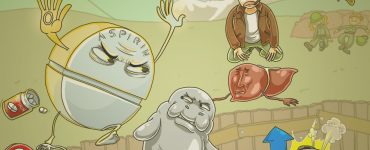
We frequently hear this question from first-year students – “I’m using *Pathoma*. Should I use Picmonic too? Isn’t it the same thing…?” In our student surveys, second-year students often write in their advice about what helped them the most from the beginning of medical school. We’ll help close the confusion loop and share why students are using both resources as they embark on their med school journey, and recommend you do, too!
Strategy #1
Students use both products at the same time — Pathoma to gain a stronger conceptual understanding of the material, and Picmonic to cement in the details. Improve your retention of the key facts you learned in Pathoma by using Picmonic’s picture mnemonics and intelligent retention-building quizzes.
Bottom line: Pathoma will help you understand the concept and Picmonic will help you remember the important high-yield facts.
Strategy #2
Picmonic Playlists are dynamic guides that follow Pathoma (and other books) page by page, telling you exactly which “Picmonics” to study along the way. Students love using Picmonic’s book reference of Pathoma, to go page-by-page, topic by topic.
Bottom line: Picmonic topics are mapped page-by-page to Pathoma, making it simple to use both resources in sync.
Strategy #3
Students use Picmonic for pathology if they don’t have time to watch Pathoma.
Bottom line: Picmonic videos are ~2 minutes long, so you can quickly learn any topic if you’re short on time.
Strategy #4
Students customize Picmonics with additional info found in Pathoma. Picmonic offers a “customize and create” feature that allows students to add facts to Picmonics and create new ones if desired.
Bottom line: Picmonic’s customization features enable you to add information directly to each Picmonic image, so you have everything you need in one visual, memorable place.
Strategy #5
Students use Picmonic’s quiz bank after watching Pathoma videos. Quiz yourself by book chapter to maximize retention of everything you are studying.
Bottom line: Picmonic has over 15,000 quiz questions to help you assess what you’ve learned in Pathoma. If you miss a question, you can watch a quick Picmonic video to lock in the details.
Strategy #6
Students watch Picmonic videos before and after doing Pathoma.
Bottom line: Student learning preference is key, watch Picmonics before or after Pathoma, whatever works best for you.
Study smarter, not harder. Using Pathoma and Picmonic together from the first day of medical school will give you the greatest amount of learning benefit and save you time during board prep your second year of school.













